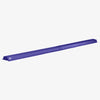Since 1896, weight lifting has captivated audiences across the globe, testing athletes’ explosive strength and skills, all with the hope of being named a world champion. Over the decades, the sport has evolved from a two-event, men’s only competition to several events and weight classes for men and women alike.
Today, we’ll discuss what you need to know about Olympic weightlifting, so you can follow along on July 24th and watch the best in the world and go for gold, silver, and bronze.
A Brief History of Olympic Weightlifting
Weightlifting has been a staple sport for 25 of the 28 modern summer Olympics. The sport has changed dramatically over the decades, with its earliest beginnings offering only a men’s division with two events: one and two-handed lifts performed with dumbbells and barbells.
By the 1928 summer Olympics, weightlifting’s format was revamped to include specific lifts like the snatch, clean and jerk, and the clean and press.
Then in 1972, Olympic weightlifting underwent yet another format change, this time removing the clean and press (too difficult to judge) and adding weight divisions. The remaining two lifts are still the only Olympic lifts judged today. Here’s a quick breakdown of these movements:
The Snatch - The lifter picks up the barbell and lifts it above their head in one singular motion.
The Clean & Jerk- The lifter picks up the barbell and brings it to their chest (clean) and pauses. Then, the lifter extends their arms and legs to lift the barbell above their head (jerk), ending with straight elbows.
Years 1972 to 1992 started what is now known as the “Golden Age” of Olympic weightlifting, with many of the world’s most renowned weight lifters making their name, including 4’ 10”, “Pocket Hercules” Naim Suleymanoglu, Yuri Zakharevich, Asen Zlatev, and more.
Due to rampant steroid use, the International Olympic Committee (IOC) once again changed the weight classes, essentially wiping out all existing world records and starting fresh with enhanced drug testing protocols.
In 1998, after more than 100 years and 22 Olympic games featuring men’s weightlifting events, the IOC decided women could begin competing in their own division. By 2000, women were competing in the summer games in Sydney, Australia.
2021 Tokyo Games: Weight Divisions, Rules, & Scoring
Today, there are seven weight classes for men and women’s divisions with 14 athletes in each class, broken down in the following way:
| Men’s Weight Classes | Women’s Weight Classes |
| 61 kg (134.5 lbs) | 49 kg (108.0 lbs) |
| 67 kg (148.7 lbs) | 55 kg (121.3 lbs) |
| 73 kg (160.9 lbs) | 59 kg (130.1 lbs) |
| 81 kg (178.6 lbs) | 64 kg (141.1 lbs) |
| 96 kg (211.6 lbs) | 76 kg (167.6 lbs) |
| 109 kg (240.3 lbs) | 87 kg (191.8 lbs) |
| +109 kg (over 240.3 lbs) | +87 kg (over 191.8 lbs) |
Before the start of each competition, athletes will verify their weight class with a weigh-in. Here, each athlete’s coach will mark down how much weight, in kilograms, the athlete’s attempted lift will be for their snatch and clean and jerk.
Athletes are allowed three attempts for each lift, with an attempt at lifting the heaviest weight possible. They are allotted one minute per lift, and if a second attempt is needed, they are allotted two minutes. Each athlete has a 10-minute break between their snatch attempts and clean and jerks.
Scoring
After evaluating each lift, the referee will decide whether the lift qualifies with a white button (good lift) or a red button (no lift). It takes two of the three referees to make the same decision (good lift or no lift) before the athlete can drop the barbell.
Scores are calculated by combining each athlete’s best snatch and clean and jerk. The overall winner will have the best score in one of the two lifts. If a tie occurs, the athlete with the higher snatch total will receive the higher ranking. If snatch totals are also tied, it will come down to the athlete who completed the clean and jerk in the fewest attempts.
With the weightlifting teams already determined for the 2021 Tokyo games, the top lists for men and women are largely dominated by lifters from Asia and Europe. Among those to watch out for is 2016’s gold medalist Lasha Talakhadze, known as one of the most prolific male lifters in Olympic lifting today, American female lifters Jourdan Delacruz, Katherine Nye, Egypt’s Sarah Ahmed and plenty of other talented athletes from across the globe.
Olympic Lifting at Home
One of the greatest things about Olympic lifts is that virtually anyone can do them. While the weight on the bar likely won’t be as heavy as what you’ll see at the Olympics in July, Olympic lifting movements can be performed with light weights or an empty barbell and offer many physical benefits, like improved reflexes and flexibility, and better coordination.
Whether you try these complex moves out with an empty barbell or free weights, We Sell Mats™ has the perfect heavy duty floor mats and rubber floor tiles to protect your floors from heavy equipment. We’ve even got high-grade Spider Chalk for increased grip strength as you power through your lifts and watch your favorite athletes lift their way to the gold medal!
Shop We Sell Mats™ today to discover your new favorite fitness mats, and be sure to tune into the 2021 Tokyo Olympics and cheer on your favorites in every category!




